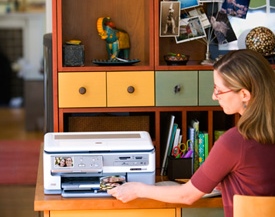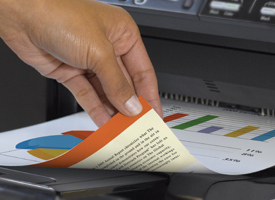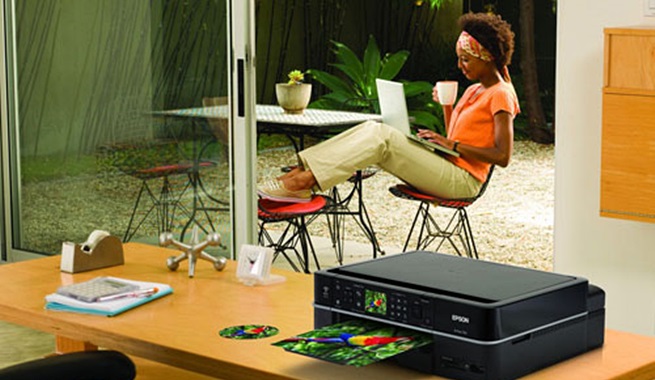 School reports. Forms. Documents. Photographs… We all need to print something sometimes. When that “sometimes” becomes fairly frequent, it is time to buy a printer suitable for home use.
School reports. Forms. Documents. Photographs… We all need to print something sometimes. When that “sometimes” becomes fairly frequent, it is time to buy a printer suitable for home use.
But with such variety available, which one should you choose? That depends on your printing needs, your budget, and on how much physical space you can spare for your new device. Consider different options and features listed below and make the decision!
Inkjet or laser
In general, lasers print higher-quality text than inkjets, while inkjets print higher-quality photos. (I am talking about affordable models here, not the top-of-the–range devices which can do… pretty much anything you can dream of!) Ask yourself whether text or photos are more important and pick accordingly!
Single-function or all-in-one
A printer that does what its name suggests – prints – is usually enough for home use. However, if you plan to digitise your traditional photo collection – go for a printer that can scan too. It will also be able to copy, though I can’t see many situations that call for a copier in a home environment.
 How about duplex?
How about duplex?
Most inkjet and laser printers print on only one side of the paper, but some are capable of duplex printing (also known as two-sided printing). This is great for eco-friendly people out there, as well as people looking to save on the cost of paper.
Paper size
If all you do is print on standard A4 paper, there’s no need to worry about this one. But what if you want to print on a bigger, or smaller surface? If you often print 10 x 15 cm photos, rather get a printer that handles that size well. Also get the paper in the right size; don’t even try to cut it with scissors. Take my word: that never works.
Look, no borders!
Most modern printers can print on the entire paper surface, from left to right and top to bottom. Borderless printing is indispensable for photos and images, so if that’s the way your inclinations go….
Connectivity
These days, printers usually connect to a computer with a USB cable. More and more home printers include an Ethernet port as well. However, the best way to go is wireless, with the help of Bluetooth or Wi-Fi. With wireless, you can print from anywhere in the house; plus, there are no ugly cables stretching around.

Space, speed, noise and ease of use
Spacewise, look for a printer that will fit nicely into the space you designated for it. Speed is usually not crucial for home printing; if you print only a few pages at a time, you probably don’t need a fast printer. Noisy printers can be a problem, for example if you have a baby sleeping a thin wall away.
Ease of use is self-explanatory. If you enjoy operating complex machinery, by all means go for a device that will refuse to work until after you’ve read the entire manual. Everybody else would do better to opt for a printer that simply works at the touch of a button.
Total costs
It is important to consider not only the price of the printer, but also the total cost of ownership. Most manufacturers give the cost per page, which can be a good reference point. In any case, be sure to know the price of the toner and how many pages one cartridge can approximately print.
The bidorbuy printer section makes the job of choosing your printer easy. You can select your future printer by brand (HP, Canon, Epson, Samsung, etc.), type (inkjet, laser, photo, etc.), functionality (all-in-one or dedicated), connectivity (USB, wireless, etc.), condition (new or second-hand). Do your homework well and your award will be the printer that’s just right for you.









